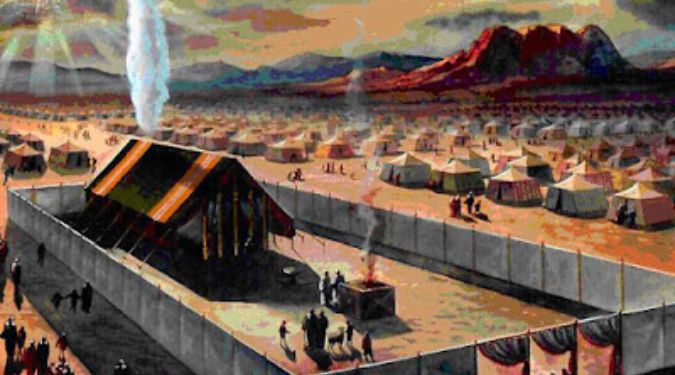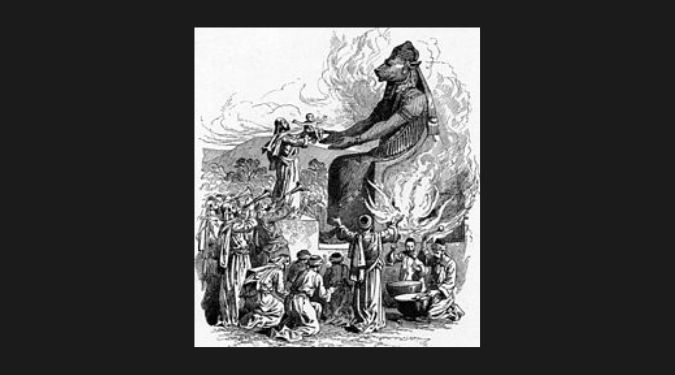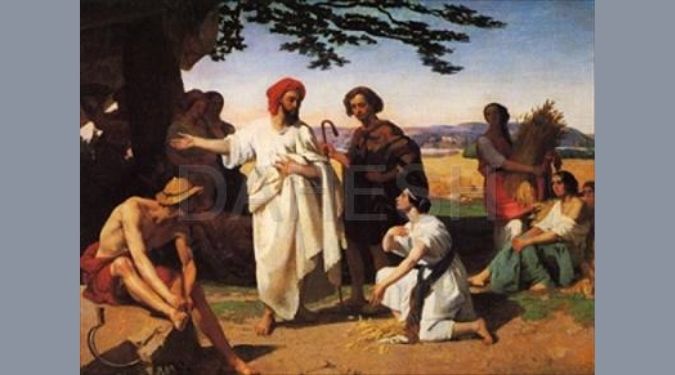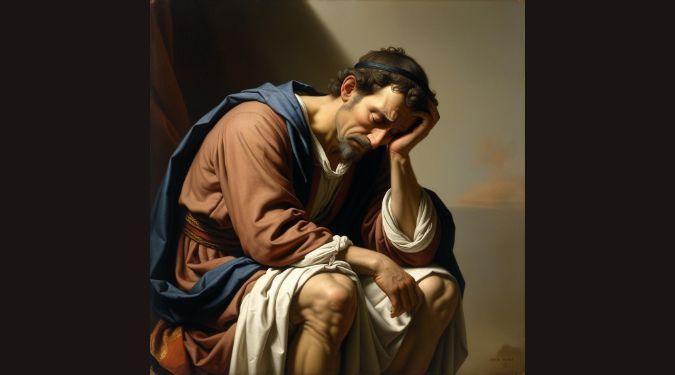Thirteen out of forty chapters of the Book of Exodus concern the “Tent of Meeting” and the ritual worship associated with it – that’s one third of the entire book! If we ignore these chapters, we miss out on much of the lessons of the Book of Exodus.
Let’s go back to the base of Mt. Sinai with the Israelites. In the 25th chapter of Exodus, God tells Moses:
And let them make me a sanctuary, that I may dwell in their midst.
Exodus 25:8 RSV
The word “sanctuary” here, sometimes translated as “tabernacle”, is מִקְדָּ֑שׁ in biblical Hebrew and is pronounced “mik-DAWSH.” The verb “to dwell” is שָׁכַן in biblical Hebrew, pronounced “shaw-KAN,” and means to to live with, or even camp with.
Another phrase often used for this sanctuary in biblical Hebrew is “Tent of Meeting”, מוֹעֵ֑ד אֹ֣הֶל (read right to left) which is pronounced “O-hel mo-ADE”. We see this phrase in Exodus 29:4 and many other places:
You shall bring Aaron and his sons to the door of the tent of meeting, and wash them with water.
Exodus 29:4 RSV
As we shall see a bit later, this word “meeting” does not mean a gathering of the Iraelites or congregation, but rather a specific place for God to meet Moses, and then Aaron and his sons.
Pretend that we’re walking toward this Tent of Meeting. As we approach, we enter the Court of the Tabernacle, an enclosure 5 cubits high, 50 cubits wide, and 100 cubits in length (Exodus 27). A cubit is about 18 inches and represents the length of a man’s arm from his elbow to the tip of the fingers, so the enclosure was about 75 by 150 feet, and was about 7.5 feet high. The Tent of Meeting was on the west side of this enclosure, with the opening facing east, and was very colorful – scarlet and indigo dominated. Outside of the tent was a large bronze wash bowl for the priests, and a bronze altar, 7.5 by 7.5 feet, and 4.5 feet high. (Exodus 26)
The Tent of Meeting itself measured 15 feet by 45 feet and was divided into two parts: an inner square or actually cubic chamber of 15 feet x 15 feet x 15 feet) called the Holy of Holies, or Most Holy Place, and the Holy Place, 15 feet x 30 feet. A sacred veil separated the Holy of Holies from the Holy Place. In the Holy Place was a golden altar of incense, and a table for the Bread of the Presence. On the other side of the veil, in the Holy of Holies, was the Ark of the Covenant, containing the tablets of the Law, Manna, and Aaron’s rod. (Hebrews 9:4) The Ark was topped with a gold cover, called the Mercy Seat or Propitiatory in some translations, and on top of the cover were statues of two cherubim facing each other with their wings outstretched (Exodus 25). It was between the wings of the cherubim that God said he would dwell (Exodus 25:22).
This description of the Tent of Meeting matches nearly perfectly, except with respect to scale, with the description of Solomon’s Temple given in 1 Kings 6 and 2 Chronicles 3.
We learn from the 16th chapter of Leviticus that once every year Aaron was to sprinkle the blood of a sacrificed bull on the gold cover of the Ark in atonement for the sins of Israel. You can read more about that in my post on the Hilasterion.
God’s Dwelling
God actually dwelled in a special way in the Holy of Holies of both the Tent of Meeting and later, the Temple:
There I will meet with you, and from above the mercy seat, from between the two cherubim that are upon the ark of the testimony, I will speak with you of all that I will give you in commandment for the people of Israel.
Exodus 25:22 RSV
And you shall set the bread of the Presence on the table before me always.
Exodus 25:30 RSV
The word Presence is the Hebrew פָנִים, pronounced “paw-NEEM,” meaning face or faces, so the “Bread of the Presence” might be considered the “Bread of the face-to-face”, or “Bread before my face.” The same word was often used in association with an audience with a king.
And you shall put it before the veil that is by the ark of the testimony, before the mercy seat that is over the testimony, where I will meet with you.
Exodus 30:6 RSV
And he said, “My presence will go with you, and I will give you rest.”
Exodus 33:14 RSV
Then the cloud covered the tent of meeting, and the glory of the Lord filled the tabernacle.
Exodus 40:34 RSV
And when Moses went into the tent of meeting to speak with the Lord, he heard the voice speaking to him from above the mercy seat that was upon the ark of the testimony, from between the two cherubim; and it spoke to him.
Numbers 7:89 RSV
We read in the first Book of Samuel that when the Israelites finally entered the Promised Land, Canaan, they brought the Tent of Meeting to Shiloh:
So the people sent to Shiloh, and brought from there the ark of the covenant of the Lord of hosts, who is enthroned on the cherubim; and the two sons of Eli, Hophni and Phin′ehas, were there with the ark of the covenant of God.
1 Samuel 4:4 RSV
And David arose and went with all the people who were with him from Ba′ale-judah, to bring up from there the ark of God, which is called by the name of the Lord of hosts who sits enthroned on the cherubim.
2 Samuel 6:2 RSV
In the Second Book of Kings Hezekiah prays in the temple “before the Lord”:
And Hezeki′ah prayed before the Lord, and said: “O Lord the God of Israel, who art enthroned above the cherubim, thou art the God, thou alone, of all the kingdoms of the earth; thou hast made heaven and earth.
2 Kings 19:15 RSV
And we hear about God enthroned upon the cherubim in the Holy of Holies in at least two psalms associated with Temple worship:
Give ear, O Shepherd of Israel, thou who leadest Joseph like a flock! Thou who art enthroned upon the cherubim, shine forth before E′phraim and Benjamin and Manas′seh! Stir up thy might, and come to save us!
Psalm 80:1-2 RSV
The Lord reigns; let the peoples tremble! He sits enthroned upon the cherubim; let the earth quake!
Psalm 99:1 RSV
Fast forwarding to the New Testament, we see the inspired author of the Letter to the Hebrews use the words “shadow” and “form” to describe the holy places of the Tent of Meeting and Temple, meaning that they were types or patterns of the good things to come in Christ. Hebrews 8:2, Hebrews 10:1 , and also also Wisdom 9:8.
The ancient Tent of Meeting prefigured heaven realities, as well as Jesus dwelling among us and interceding for us in heaven. God dwelled in some way with the Israelites in the Holy of Holies in the Tent of Meeting above the Ark and between the cherubim. If having an abiding, focused presence among the Israelites was so important to God in his Covenant with them, shouldn’t we expect the same for the Church in the New Covenant?



